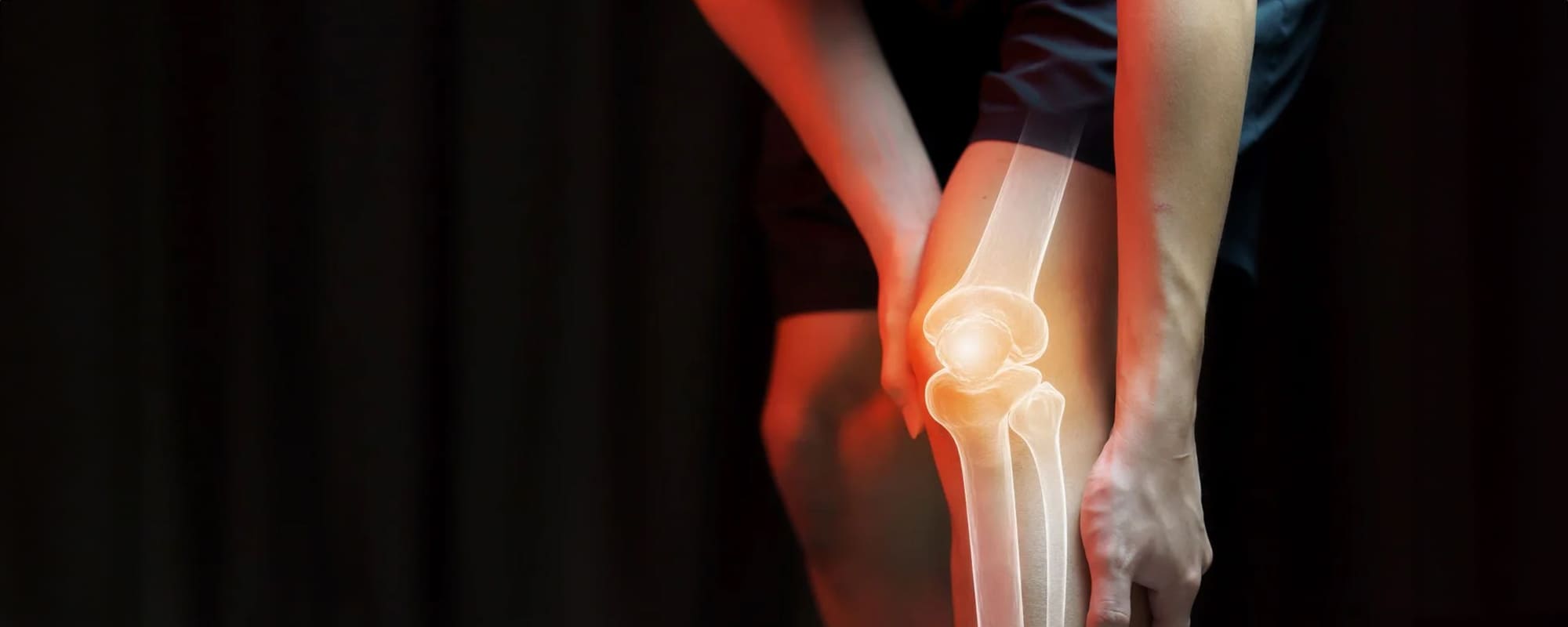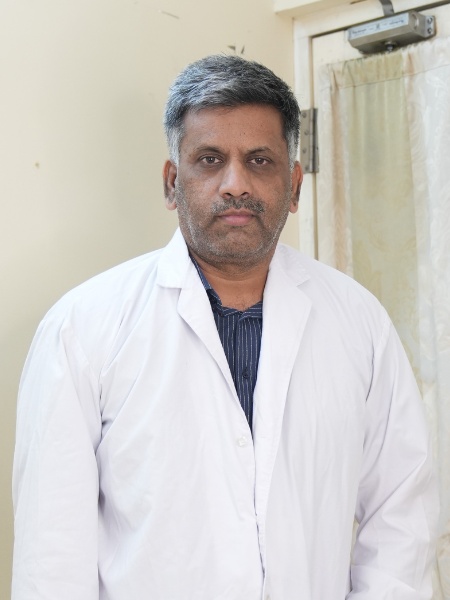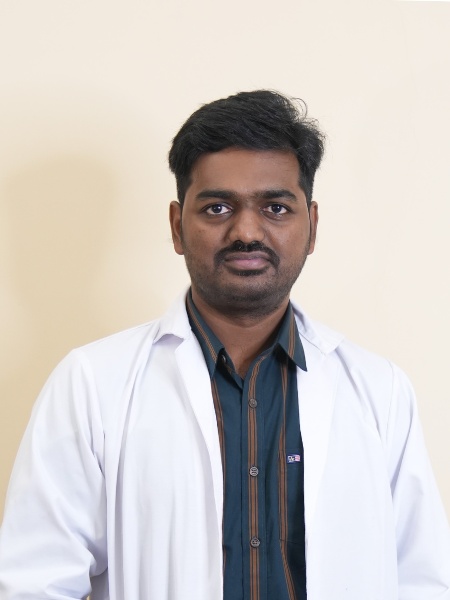ORTHOPEDIC
Dr. Gurunadh Sarma is amongst the top few Orthopedic Surgeon is India who can address all sub specialty branches in orthopedics with great care, passion and precision. His key specialties being Robotic Joint Replacement Surgeries (Hip, Knee) & Pediatric Orthopedic Surgeries along with Deformity corrective surgeries. Along with these he is trained extensively in Hand Surgeries, Specialized in Arthroscopy (keyhole) surgeries. Can handle any scale of Complex Trauma (Accident) cases. He is very good at addressing Chronic Bone Infections, Limb length discrepancies. With his vast 16+years of experience, having worked with National and International faculty surgeons, being able to handle in all scenarios & hospital setups. Dr. Gurunadh Sarma is very good & compassionate in patient - attender counselling, reassurance & motivating them to real a set goal. Being a very good speaker, Dr. Gurunadh Sarma delivered many guest lectures, paper presentations & publications. He is active in many social groups like Rotary Club of Vijayawada, Sri Sathya Sai Seva Samithi, NGO Service Organizations. Career & Academics Dr. Gurunadh Sarma proved his Academic excellency since his 7th class, being topper in state wide Maths & Science Talent Test Exams, Topper of the School in SSC Board Exams. He pursued his graduation in Guntur & Post Graduation (DNB NBE) from prestigious Sri Sathya Sai Institution of Higher Medical Sciences, Puttapathi. Got trained in Join Replacement & Arthroscopy Surgeries from Internationally renowned Surgeons. Perused his fellowship from Indira Gandhi Institute of Child Health, Bangalore ( Under R.G.U.H.s). Got trained in hand surgeries from Stanley Medical College, Chennai.
Advanced Orthopedic Care at Sentini Hospitals: Specialized Knee Replacement & PRP Treatment
At Sentini Hospitals in Vijayawada, we pride ourselves on offering comprehensive and advanced orthopedic services. Our department is equipped with the latest medical technologies and staffed by a team of highly skilled orthopedic surgeons and healthcare professionals dedicated to providing exceptional patient care. Two of our standout services are Knee Replacement Surgery and Platelet-Rich Plasma (PRP) Treatment.
Knee Replacement Surgery
Introduction to Knee Replacement Surgery
Knee replacement surgery, also known as knee arthroplasty, is a common procedure performed to relieve pain and restore function in severely diseased knee joints. The surgery involves removing damaged cartilage and bone from the surface of the knee joint and replacing them with artificial components.
Indications for Knee Replacement Surgery
Patients who suffer from severe osteoarthritis, rheumatoid arthritis, post-traumatic arthritis, or other knee conditions that result in chronic pain and significant functional impairment may be candidates for knee replacement surgery. Symptoms that might indicate the need for this surgery include:
- Severe knee pain that limits everyday activities
- Pain that persists even while resting, whether day or night
- Chronic knee inflammation and swelling that doesn't improve with rest or medications
- Knee deformity, such as bowing in or out of the knee
- Failure to improve with other treatments like physical therapy, medications, or injections
Types of Knee Replacement Surgery
-
Total Knee Replacement (TKR): In a total knee replacement, the entire knee joint is replaced with artificial components. This procedure is often recommended for patients with severe arthritis affecting the whole knee.
-
Partial Knee Replacement (PKR): Also known as unicompartmental knee arthroplasty, this procedure involves replacing only the damaged part of the knee. It is suitable for patients with arthritis confined to a single compartment of the knee.
-
Minimally Invasive Knee Replacement: This approach involves smaller incisions and less tissue disruption compared to traditional knee replacement surgery. The benefits include reduced postoperative pain, quicker recovery, and shorter hospital stays.
Procedure Overview
-
Preoperative Assessment: Patients undergo a thorough evaluation, including medical history, physical examination, and imaging studies such as X-rays or MRI scans to determine the extent of knee damage and plan the surgery accordingly.
-
Surgical Procedure: During the surgery, the patient is usually placed under general anesthesia or spinal anesthesia. The orthopedic surgeon makes an incision over the knee to access the joint. The damaged cartilage and bone are removed, and the artificial components (prosthesis) are positioned to restore knee function. The prosthesis is typically made of metal alloys, high-grade plastics, and polymers.
-
Postoperative Care: Post-surgery, patients are monitored in the recovery room and gradually introduced to physical therapy. Pain management, wound care, and rehabilitation exercises are crucial components of the recovery process. Most patients are encouraged to begin moving their knee on the day of surgery to prevent stiffness and promote healing.
Recovery and Rehabilitation
Recovery from knee replacement surgery varies from patient to patient but generally involves several phases:
-
Immediate Postoperative Phase: Patients are encouraged to stand and walk with the help of a walker or crutches within a day or two after surgery. Pain management and wound care are prioritized.
-
Early Rehabilitation: Physical therapy begins immediately to restore range of motion and strength. Patients work on exercises designed to improve knee function and mobility.
-
Long-term Recovery: Full recovery can take several months. Patients gradually regain strength and function, and are typically able to resume most normal activities within three to six months. Continuous physical therapy and adherence to postoperative instructions are key to a successful recovery.
Benefits and Risks
Benefits:
- Significant pain relief
- Improved mobility and knee function
- Enhanced quality of life and ability to perform daily activities
Risks:
- Infection
- Blood clots
- Implant loosening or wear
- Nerve or blood vessel injury
- Allergic reactions to the materials used in the prosthesis
PRP Treatment (Platelet-Rich Plasma Therapy)
Introduction to PRP Treatment
Platelet-Rich Plasma (PRP) therapy is a revolutionary treatment option that utilizes the body's natural healing processes to repair and regenerate damaged tissues. PRP is derived from the patient's own blood and contains a high concentration of platelets, which are rich in growth factors that promote healing and tissue regeneration.
Applications of PRP in Orthopedics
PRP therapy is used to treat a variety of orthopedic conditions, including:
- Tendon injuries (e.g., tennis elbow, Achilles tendonitis)
- Ligament sprains and tears
- Muscle strains
- Osteoarthritis
- Joint pain and inflammation
Procedure Overview
-
Preparation: A small amount of blood is drawn from the patient, similar to a routine blood test. The blood is then processed in a centrifuge to separate the platelets from the other components.
-
PRP Injection: The concentrated platelets are injected into the affected area under ultrasound guidance to ensure precise placement. The entire procedure is minimally invasive and usually takes about an hour.
Benefits of PRP Therapy
-
Natural Healing: PRP harnesses the body's own healing mechanisms, reducing the need for medications or more invasive treatments.
-
Minimally Invasive: The procedure is quick and performed on an outpatient basis, allowing patients to return home the same day.
-
Reduced Recovery Time: PRP therapy can accelerate the healing process, allowing patients to resume their normal activities sooner.
-
Versatile Treatment: PRP can be used to treat a wide range of orthopedic conditions, making it a versatile option for patients with different needs.
Effectiveness of PRP Therapy
Numerous studies have demonstrated the effectiveness of PRP therapy in reducing pain and improving function in patients with various orthopedic conditions. However, the degree of improvement can vary based on factors such as the severity of the condition, the specific area being treated, and the patient's overall health.
Risks and Considerations
While PRP therapy is generally safe, there are some potential risks and considerations to keep in mind:
-
Infection: As with any injection, there is a small risk of infection at the injection site.
-
Pain or Discomfort: Patients may experience mild pain or discomfort at the injection site, which typically resolves within a few days.
-
Variable Results: Not all patients respond to PRP therapy, and the degree of improvement can vary.
Conclusion
At Sentini Hospitals, our commitment to advanced orthopedic care is reflected in our comprehensive range of services, including Knee Replacement Surgery and PRP Treatment. Our expert team is dedicated to providing personalized care, utilizing the latest medical technologies and techniques to ensure the best possible outcomes for our patients. Whether you're seeking relief from chronic knee pain or exploring innovative treatments for orthopedic conditions, you can trust Sentini Hospitals to deliver the highest standard of care.



.jpg)







